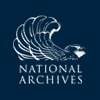Brigadier General Jacob Bayley to George Washington, 14 May 1781
From Brigadier General Jacob Bayley
Newbury [Vt.] 14th May 1781
Sr
I Send by Lewes Vincent the Pay and Muster Role of the Company of St Francois Indians according to A Resolution of Congress Respecting them,1 a much larger Number has been here At Times but are not Steadye and tho, I do not think they have ever done us any Damage but are Rambleing In the woods those Inserted have been Servisable as to Scouts &c. the Bearer Lewes Vincent has allways been Elert In our Cause and I Should be glad he might be added as a Leiutt,2 I have Delivered to Eleaven Indians Cloathing which I Recd by your Excelency order at Boston—Capt. Vincent was Cloathed at Boston the Squaws and Children and two Indians were not Included in the order if your Excelency Chuses to give any orders about them I Shall be ready to obey them.3
two Day Since three Deserters Came from Masco in Canada they Inform that the Enemy are Building a Fort at the Head of Masco River4 not more than thirty Mile from Hazens Road5 as we Travel not more than 20 miles strait, that the Enemy have fortifyed Cape Diamon and have made Mines without the City in every Place where it is likely.6
the City may [be] Stormed, I have Sent three men to View the Enemy works at Masco, the first of last march the Enemy Captivated at Mr Elkins in Peacham twenty mile on Hazens Road Colo. Thomas Johnson and two others In the Night they belonged to this Town and were out on business7—we have Obtained no help as yet the fears of the People are great and not without reason I am your Excelencys Most Obedient Humble Servant
Jacob Bayley
ALS, DLC:GW.
1. A congressional resolution adopted on 7 April 1780 had ordered that all St. Francis Indians “willing to enter into the service of the United States” be “collected and formed into a company or companies” and receive “the like pay, subsistance, and rations, with the officers and soldiers of the continental army” (, 16:334–35; see also Samuel Huntington to GW, 13 April 1780, and n.1).
2. GW denied the request (see his reply to Bayley, 9 June, and n.2).
Lewis Vincent (Sawantanen; c.1745–1825), a Wendat Indian born at Lorette near Quebec, entered Moor’s Indian Charity School in Hanover, N.H., in 1772 and impressed Eleazar Wheelock, who directed the school and also founded Dartmouth College, where Vincent graduated in 1781. Vincent served as a private in the New Hampshire militia during the Saratoga campaign in 1777 and later acted as a scout and interpreter. Conversant in Wendat, Mohawk, French, English, and Abenaki, Vincent returned to his tribe, where he served as a teacher and leader against settler encroachments. For a biographical sketch, see Jonathan Lainey and Thomas Peace, “Louis Vincent Sawatanen: A Life Forged by Warfare and Migration,” in Kristin Burnett and Geoff Read, eds., Aboriginal History: A Reader, 2d ed. (Toronto, 2016), 106–17.
3. For clothing matters, see Bayley to GW, 31 Aug. 1780, postscript.
4. The British were constructing a blockhouse near the Yamaska River, a waterway that passes through St. Hyacinthe, formerly called Maska (Mosko). Quebec governor Frederick Haldimand had announced on 1 March that the blockhouse was “to be permanent” (, 622).
5. Work on a road from Newbury, Vt., to St. Jean, Quebec, had been started early in the war and resumed by troops under Col. Moses Hazen in 1779. The later effort opened approximately fifty miles of road above Peacham, Vt. (see GW to John Hancock, 25 Dec. 1775, n.6, and Bayley to GW, 15 April and 15 Oct. 1776; see also GW to Hazen, 6 March 1779).
6. Cap Diamant (Cape Diamond), at the east end of Quebec City, is located to the south of where the Saint-Charles River flows into the St. Lawrence River. The now famous Citadelle is situated atop the cape.
7. Connecticut Loyalist Azariah Pritchard led a party of Tories that captured Thomas Johnson, a former militia officer, while he was at the home of Jonathan Elkins in early March. Jacob Page and Elkins’s sons, Moses and Jonathan, Jr., also were taken prisoner. In his journal entry for 8 March, Johnson described his capture after being awakened “about 12 or 1 o’clock” and the tiring trek through the woods that day to “the River Lamoille” (, 384–85). The American Journal, and General Advertiser (Providence) for 28 March published a report “that a scouting party of the Refugees in Indian dress, from Canada lately came into Peachum, a new settling township, about 7 miles west of Connecticut River, and entering the house of one Mr. Elkins in the night, made prisoners of several persons they found in their beds; ordered them to dress immediately, and fix for a march into Canada. … This party told Elkins and the people of the house, to whom they behaved civilly, that there was a body of 4 or 500 Indians at Onion River, and a large party a few miles back, that were coming against the Cohoos to destroy it, and would be upon them immediately.” This threat turned out to be a story told “to amuse the inhabitants, while they made their escape.” Johnson was paroled on 13 March, but Page and Elkins, Jr., were imprisoned in Quebec. Elkins later was sent to England (see , 872–73; and , 93–94).
Jonathan Elkins (1734–1808) was born in New Hampshire and moved to Haverhill, N.H., in 1760. His family became the first settlers at Peacham around 1776. Elkins later served in the Vermont legislature.

![University of Virginia Press [link will open in a new window] University of Virginia Press](/lib/media/rotunda-white-on-blue.png)
